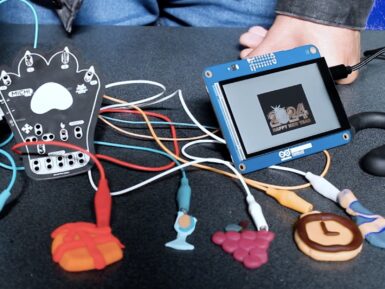
Overview
This Dust Sensor gives a good indication of the air quality in an environment by measuring the dust concentration. The Particulate Matter level (PM level) in the air is measured by counting the Low Pulse Occupancy time (LPO time) in given time unit. LPO time is proportional to PM concentration.
This sensor can provide reliable data for air purifier systems; it is responsive to PM of diameter 1μm.
Note: This sensor uses counting method to measure dust concentration, not weighing method, and the unit is pcs/L or pcs/0.01cf.
Tech specs
|
Item |
Norm |
Unit |
|
VCC |
4.75~5.75 |
V |
|
Standby Current Supply |
90 |
mA |
|
Detectable range of concentration |
0~28,000 / 0 ~ 8000 |
pcs/liter / pcs/0.01cf |
|
Operating Temperature Range |
0~45 |
°C |
|
Output Method |
Negative Logic, Digital output, High: over 4.0V(Rev.2), Low: under 0.7V |
- |
|
Detecting the particle diameter |
>1 |
μm |
|
Dimensions |
59(W) × 45(H) × 22(D) |
mm |
|
Humidity Range |
95% rh or less |
- |
Pinmaping
|
Arduino UNO |
Dust Sensor Pin |
Cable Color |
|
5V |
Pin 3 |
Red wire |
|
GND |
Pin 1 |
Black wire |
|
D8 |
Pin 4 |
Yellow wire |
Get Inspired

Display real-time meeting room availability, synchronized with Google Calendar through Arduino IoT Cloud.

Watching back a slideshow of some of your favorite times of the past years is a great way to reflect on what’s happened and get excited for the future. The Electronic Cats crew wanted to incorporate this concept into a more simplified, interactive form which resulted in the Garrita project. Garrita is a homemade platform that lets an Arduino GIGA R1 WiFi with GIGA Display Shield transform into a highly mobile slideshow thanks to its larger onboard memory capacity and convenient layout. This year, the Electronic Cats were able to take their image shifter concept even further with Michi: an existing project that turns any conductive object into a capacitive touch-sensing controller. Whenever one of Michi’s inputs are toggled, the board sends a signal to the GIGA R1 WiFi that causes the current slide to advance to the next one. In order to go from a locally stored image to something on the Display Shield, users first transform their images into a more suitable format via the LVGL conversion tool. Once downloaded, the resulting files can be easily bundled into a Sketch before they become accessible in the application code. To see more about how the Electronic Cats built Garrita, you can read their write-up here on Hackster.io.






